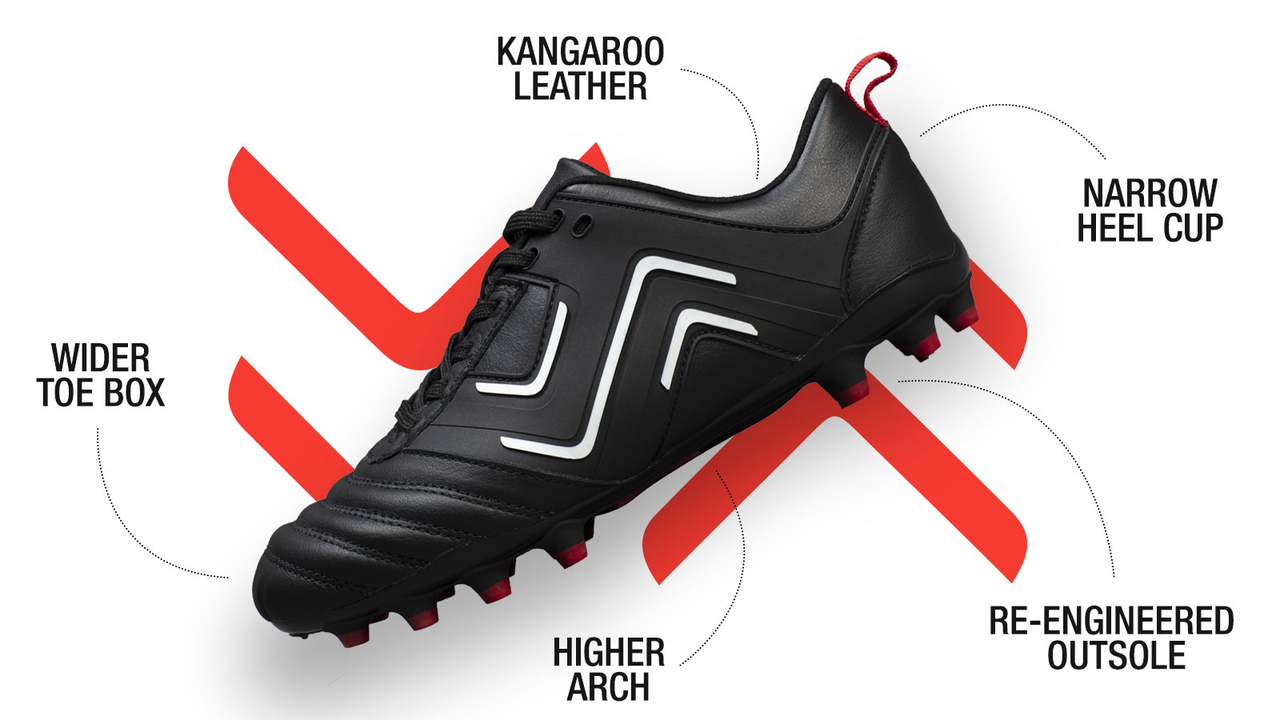The Subtle Art Of Differentiating Soccer And Football Cleats
As someone who's passionate about sports, specifically soccer and football, I've frequently encountered a question that my fellow sports enthusiasts often grapple with: "What exactly makes soccer cleats different from football cleats?" This question may seem basic at first glance, but when you dive into the technical intricacies and design differences that separate the two, it becomes a deep and interesting subject.
On Cleats And Your Toes: Cleat Design
Delving into the broad world of sports footwear, the first thing that catches the eye is the design of the cleats. For the novice, the dome-shaped studs on soccer cleats may look just like the ones on football cleats. However, there are stark differences. Soccer cleats have a uniform pattern of studs, usually 6-14, towards the edge of the sole. This arrangement is to provide a balanced weight distribution, allowing for better control and grip on the field. Contrarily, football cleats, designed for the brute and dynamic nature of the sport, feature irregular stud arrangements. This is aimed at providing maximum grip and traction when making sudden movements and tackles. Interesting fact: football cleats also have a toe stud which is absent in soccer cleats. The toe stud assists in providing grip during offensive and defensive plays. But be wary, if you try kicking a ball with that toe stud, it would be as awkward as kangaroos trying to hop backwards. Trust me, I've tried!
Sizing It Up: Toe Box And Fit
Another significant discrepancy between soccer and football cleats is the toe box and the fit of the shoes. Soccer cleats are designed to provide a tight, snug fit. This aids in providing a better feel of the ball, thus controlling it more adeptly. My daughter, Margot, an aspiring soccer player, always prefers her cleats to be form-fitting. It gives her that superior control and makes her feel like she's the next Samantha Kerr. Football cleats, on the other hand, are wide and roomy. This is designed to comfortably accommodate the substantial physical stress and forceful impacts synonymous with the sport. So, the next time you try to squeeze your feet into snug soccer cleats for a game of Aussie rules football, remember you're preparing for a duel, not a ballet.
Hard As Nails: Material Differences
Soccer and football cleats differ vastly in the material used for their construction. Soccer cleats are usually made of lightweight synthetic material, like polyurethane or leather, to allow quick movements and improve ball control. Whereas, football cleats use hard, durable material, like a stiff synthetic, to withstand heavy impacts and hard tackles. No wonder your foot doesn't come out disintegrated after a particularly ruthless tackle in a game of rugby league! Remember, using soccer cleats in a football match is like bringing a feather duster to a sword fight. Not a decision one tends to walk away from unscathed.
A Tale Of Two Highs: The Cut Of The Boots
Another striking disparity is undoubtedly the cut of the boots. Soccer cleats are low-cut, intended to facilitate quick, agile movements. The trade-off is lesser ankle support, which can be risky in high-intensity games and don't ask how I know that. Trying to compete with my son, Nathaniel, in a soccer match ended up in a rather humbling predicament, with my ankle protesting vehemently against any future sporting endeavors. Football cleats, contrastingly, offer high-cut versions for more ankle support, to counteract potential injuries from rough plays. So if you value your ankles as much as I do now, pick the right cleats!
Grip Matters: On Different Fields
Did you know that the type of field you're playing on dictates the type of cleats you'd need? Soccer is typically played on natural grass or firm ground, requiring cleats with strategically placed studs for optimal grip and control. A casual game of soccer with Margot and Nathaniel at our local sodden park proved the importance of this. Football, however, is often played on different kinds of surfaces—grassy, turf, or even in muddy conditions. That's why football cleats come in a range of detachable or molded studs to tackle any field condition. There's a fascinating piece of advice shared by an old friend who said, 'Your football cleats should be as adaptable as a chameleon changing colors.' Words that still resonate today.
A Weighty Issue: Weight Of The Cleats
A distinguishing characteristic, which is also often overlooked, is the weight of the cleats. Soccer cleats are designed to be light and agile, which is paramount for the fancy footwork and quick controls in soccer. Gosh, do you remember that swift Messi goal against Real Madrid back in 2017? Those bewitching feints and sprints wouldn't have been possible in a pair of heavy, cumbersome boots. On the contrary, football cleats are relatively heavy, primarily because of the additional protective features incorporated into them. So remember, a swift game of soccer requires you to be light on your feet, not stomping around like an angry hippo.
Twist Of The Wrist... Err...Foot: Flexibility
Last but not least, let's talk a bit about flexibility. Soccer cleats are designed to be flexible due to the continuous foot movements and handling involved in the sport. Ever felt like a contortionist while playing soccer? Now, you know why! Football cleats, on the other hand, are comparatively rigid, providing stability and minimizing the risk of foot injuries. These boots do a great job of keeping the foot firmly in place during those grueling scrums and high-impact tackles. Flexibility in football cleats? Forget it! These boots are as uncompromising as my wife when I forget to do the dishes.
